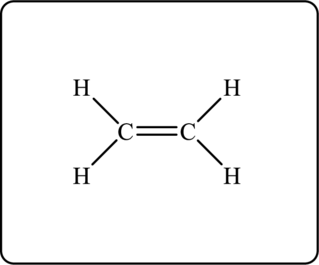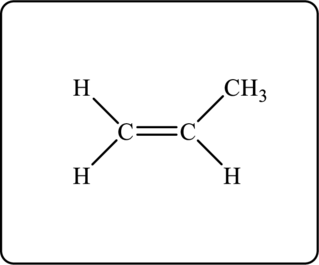
Concept explainers
(a)
Interpretation:
The empirical formula of the given hydrocarbon has to be determined.
Concept Introduction:
The hydrocarbon compounds are compounds which contains only carbon and hydrogen atoms. The combustion of hydrocarbon compounds produces large amount of heat. Combustion reaction of a hydrocarbon results in the formation of carbon dioxide and water.
(a)
Answer to Problem 101QRT
The empirical formula of given hydrocarbon is
Explanation of Solution
The mass of carbon dioxide produced is
The mass of water produced is
The molar mass of carbon dioxide is
The molar mass of water is
Use the expression to calculate number of moles.
Substitute
Therefore, the number of moles of carbon dioxide is
Consider the combustion reaction of hydrocarbon as follows.
Here,
When combustion of hydrocarbon takes place, the carbon atoms present in hydrocarbon gets converted to carbon dioxide molecule. One molecule of carbon dioxide contains one carbon atom. Therefore, the number of moles of carbon atoms present in hydrocarbon is equal to the moles of carbon dioxide.
Therefore, moles of carbon atom in hydrocarbon is
Substitute
Therefore, number of moles of water is
When the combustion of hydrocarbon takes place the hydrogen atoms present in hydrocarbon gets converted into hydrogen atoms of water molecule. One molecule of water contains two hydrogen atoms. Therefore, the number of moles of hydrogen atom present in hydrocarbon is twice the number of moles of water.
Therefore, the number of moles of hydrogen atoms is
The smallest number of moles is
Use the expression to calculate mole ratio.
Substitute
Substitute
Therefore, the empirical formula of given hydrocarbon is
(b)
Interpretation:
The given hydrocarbon is an
Concept Introduction:
Refer to part (a).
(b)
Answer to Problem 101QRT
The given hydrocarbon compound is an alkene.
Explanation of Solution
The general formula of alkane is
(c)
Interpretation:
The Lewis structure for given hydrocarbon has to be drawn.
Concept Introduction:
Refer to part (a).
(c)
Answer to Problem 101QRT
The Lewis structure for given hydrocarbon is as follows.

Another possible structure is as follows.

Explanation of Solution
The given hydrocarbon has empirical formula

Figure 1

Figure 2
Want to see more full solutions like this?
Chapter 10 Solutions
OWLV2 FOR MOORE/STANITSKI'S CHEMISTRY:
- please help and the percent recovery of clove oil from cloves is 4.61% and i have attached my ir spectrum as well. Based on your GC data, how many components are in the clove oil? Calculate the percentage of each component. Clearly show your work. Which of the components corresponds to eugenol? How do you know? Is eugenol the major component?arrow_forwardplease help and i am so confused if the picture is the gc data or ir spectrum. you dont have to do everything just what you can please because i am lost and the mass of the cloves was Mass of cloves 62.299g. Mass of recovered clove oil 62.761g.arrow_forwardWhich compound would you expect to have a higher decomposition temperature,Na2CO3 or Cs2CO3? Justify your answer, but you do not need to do any calculations.arrow_forward
- Can I get helpp drawing my arrowsarrow_forwardWhich of the m/z values corresponds to the base peak in the mass spectrum shown? 100 80 A. 45 B. 44 C. 29 D. 15 Intensity 20 0 10 20 30 40 B- m/z -8 50 E. 30 Which of the m/z values correspond to the molecular ion for the compound shown? A. 18 B. 82 OH C. 100 D. 102 E. 103arrow_forwardCan someone help me with drawing my arrows.arrow_forward
 Organic ChemistryChemistryISBN:9781305580350Author:William H. Brown, Brent L. Iverson, Eric Anslyn, Christopher S. FootePublisher:Cengage Learning
Organic ChemistryChemistryISBN:9781305580350Author:William H. Brown, Brent L. Iverson, Eric Anslyn, Christopher S. FootePublisher:Cengage Learning Chemistry: The Molecular ScienceChemistryISBN:9781285199047Author:John W. Moore, Conrad L. StanitskiPublisher:Cengage Learning
Chemistry: The Molecular ScienceChemistryISBN:9781285199047Author:John W. Moore, Conrad L. StanitskiPublisher:Cengage Learning

